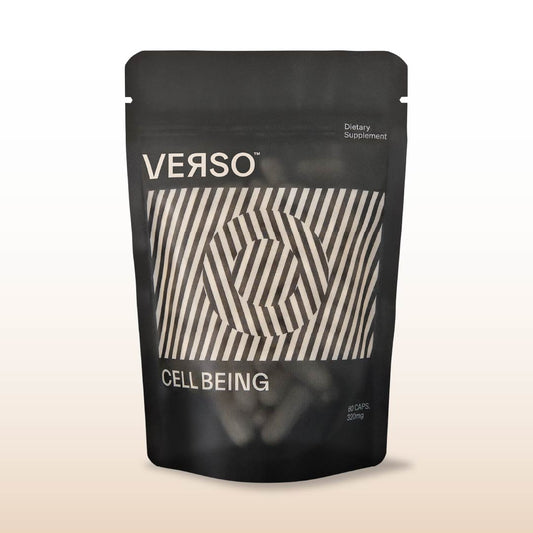“Centenarian” describes a person over 100 years old. What are their secrets?
WHAT IS A CENTENARIAN? WHERE ARE THEY?
“Centenarian” describes a person over 100 years old. While you might know of a family member or even a neighbor who has reached 100 years in their lifetime, living to 100 is quite rare. Longevity experts Michel Poulain and Gianni Pes outlined villages or regions of high density longevity in the Journal of Experimental Gerontology; these findings were later expanded upon by National Geographic fellow and journalist, Dan Buettner(8, 30). The various regions became known as the ‘Blue Zones’: Sardinia, Italy; Nicoya Peninsula, Costa Rica; Ikaria, Greece; Loma Linda, CA; and Okinawa, Japan.
WHAT IS UNIQUE ABOUT THE BLUE ZONES?
Sardinia, Italy has 10 times more centenarians per capita when compared to the U.S. Ikaria, Greece, is nearly free of many chronic diseases, such as dementia, that are common in the western world and has more healthy individuals over 90 years of age than anywhere else in the world. A 60-year-old in Nicoya Peninsula, Costa Rica, has a four times greater chance of living to 90 years than a North American. In Loma Linda, largely populated by Seventh Day Adventists, individuals live on average 5-10 years longer than other North Americans. Residents of Okinawa, Japan are 40% more likely to live to 100 years compared to those of mainland Japan(12). Okinawans also have 3 times the amount of centenarians per capita when compared to the U.S. In addition to having more individuals living to 100, these Blue Zones are also renowned for the reduction or even depletion of many age-related diseases, including cancers and heart diseases(10,16). Much of the research in this area has delved into why and how centenarians, both in and out of the Blue Zones, are able to demonstrate exceptional longevity, including research into their genetics, lifestyle, and how their lifestyle/environment impacts or regulates genetic expression (otherwise known as epigenetics).
WHAT ARE LONGEVITY GENES?
Researchers have isolated certain genes related to longevity. In the Southern Italian Centenarian study, the FOXO3A polymorphism gene was associated with human longevity in males. Variants of the FOXO3 gene have been associated with longevity in a study with Ashkenazi Jewish centenarians(44). Variants of this gene pathway have also been associated with longevity in a Japanese group of semi-supercentenarians (105+), 3 groups of caucasian cohorts, as well as groups of Chinese, Hawaii-living Japanese-Americans, and German centenarians(2, 15, 24, 28, 34, 48).
WHAT IS FOXO3?
FOXO3 is considered a master regulator of ageing, but it is unknown which variant of FOXO3 is responsible for the beneficial human longevity effects. Researchers have found FOXO3 affects the IGF-1 pathway; Too little IGF-1 increases incidence for diabetes, tumors, and other chronic diseases, whereas too much IGF-1 is associated with cancer(18). FOXO3 is part of the larger IGF1/PI3K/PDK1/AKT/FOXO pathway, which is responsible for regulating cell survival and oxidative stress, both highly implicated in the aging process itself (25,50). Researchers have found that modulation of this pathway is able to prevent aging in animal studies (22).
WHAT OTHER LONGEVITY GENES EXIST AMONGST CENTENARIANS?
Another study found that a group of centenarians had less frequency of the APOE ϵ4 allele which codes apolipoprotein E and promotes early onset of atherosclerosis and is also implicated in Alzheimers, both diseases of aging, suggesting APOE genes implication in human longevity(41). APOE and FOXO3 gene variants have shown consistent results in populations of centenarians. In addition to APOE and FOXO3, a variant of SIRT3 has been suggested to modulate longevity in centenarians from Europe(1, 39). This could be partially due to interactions between SIRT3 and FOXO3(19). Mice made to have an overexpression of SIRT6 have been shown to live longer than other mice, specifically 16% longer than
wild-type mice(20). In mice, expression of SIRT3 genes, the gene variant found in the cohort of European centenarians, has been induced via nicotinamide mononucleotide(NMN) supplementation(23). Both adenosine deaminase, RNA specific (ADAR) and telomerase gene variants are also significant to human longevity, although more studies are needed to demonstrate the significance of these across populations(3,42). Overall, it is hard to study genetic expression in relation to longevity because more than likely longevity is due to a synergistic effect of multiple genes.
ARE THERE OTHER BIOMARKERS OF LONGEVITY IN CENTENARIANS?
Longevity studies in centenarians have highlighted biomarkers associated with human longevity including: large lipid particle sizes relative to cholesterol, low serum levels of heat shock proteins, and a low peroxidation index/high membrane palmitoleic acid profile(4, 37, 46). Several studies have highlighted that centenarians often have high insulin sensitivity and glucose tolerance as well as low heart-rate variability (33, 51). Studies on centenarian offspring have suggested that centenarians retain a youthful effective immune system(9,14), and that centenarians typically have less inflammation, which is present in every age-related disease (11).
HOW MUCH DO GENETICS MATTER?
While genetics account for 25% of life-span in the general population, studies have found that this percentage is far higher in long-lived populations (35, 36), which benefit from genetic variants which slow aging and prevent age-related disease(32). It’s important to understand that we can change our genetic expression with lifestyle and environmental modifications; it’s widely known, for example, that nutrient metabolism can impact genetic expression.
SO, WHAT IS IT THAT THESE CENTENARIANS EAT?
Centenarian diets commonly emphasize plant-based whole food consumption. The richest diet data set for centenarians comes from studies of the Blue Zones. In Okinawa, 90% of the diet is derived from vegetable carbohydrates, which are calorically low and nutritionally dense. The people of Loma Linda are primarily vegetarians with high intake of fruit, vegetables, and nuts (8, 26). Diets in the Nicoya Peninsula are mainly fruit, vegetables, beans, rice, and corn. Water in the Nicoya Peninsula is also high in calcium and magnesium (8). In Sardinia, they eat a Meditteranean diet: 40% of their caloric intake is from fats. The Sardinian diet contains whole grains, beans, vegetables, fruits and minimal sheep cheese. Finally, in Ikaria the diet is mainly of vegetables, fruits, whole grains, tubers, and beans(8). In both Sardinia and Ikaria, olive oil is a common addition. Mediterranean diets are cardiovascularly, metabolically, and neurologically protective(13, 29).
HOW DOES DIET IMPACT GENETIC EXPRESSION?
The food we put into our bodies can lead to changes in our genetic expression. Many Blue Zone diets are rich in plant nutrients known as phytonutrients, which activate Nrf2 and help the body respond to oxidative stress, which contributes to aging (40, 45). Oxidative stress occurs when there’s an imbalance of damaging reactive oxygen species(ROS) created during cellular processes, through the metabolism of food, or upon environmental exposure. Since oxidative stress contributes, it can be inferred that these diets are quite protective. Additionally, many phytonutrients, such as resveratrol have been shown to activate SIRT genes, which as previously discussed were suggested to be relevant to longevity in european centenarians(1, 27, 39). Interestingly enough, beneficial FOXO3 gene variants can also be activated by phytonutrients, such as quercetin(found in garlic and onion) and EGCG(found in green tea)(27). Caloric restriction, or intermittent fasting have also been noted to activate FOXO3 and SIRT expression. Additionally, protein consumption increases IGF-1 which inhibits FOXO3. Click here to read more about caloric restriction and sirtuins
HOW DO LIFESTYLE FACTORS IMPACT GENETIC EXPRESSION?
Food, stress, and exercise can up-regulate and down-regulate genes. Specifically, exercise can impact FOXO3 activation(21). The lifestyles of the individuals in the Blue Zones may be considered protective. These lifestyles were documented by journalist, Dan Buettner, where he found 9 common factors which can be summarized as: “moderate, regular physical activity, life purpose, stress reduction, moderate calories intake, a plant-based diet, moderate alcohol intake, especially wine, engagement in spirituality or religion, engagement in family life, and engagement in social life”(8). These factors are not heavily scientifically researched, thus no conclusion can be made as to their importance. However, there is no doubt that a healthy lifestyle is relevant to longevity, especially for those of us who have not won the genetic lottery. So, why not learn from the people who have consistently lived the longest?
WHAT IS THE BIGGER PICTURE?
In the laboratory, through the use of animal models scientists have been able to demonstrate that aging is not a fixed process––meaning that it can be slowed or as some suggest, even reversed. This has advanced our need to take a more serious look into the extension of the human lifespan and healthspan. Centenarians not only live to 100 years, or even past that, but the age in which they tend to develop chronic diseases is typically in the latter years of their lives. This means that they not only live longer: they live healthier(13). Despite having roughly the same number of genes associated with disease risk when compared with the general public, centenarians most likely also have an aging buffer of some sort – comprised of a genetic component that is even more pronounced due to epigenetics, and a lifestyle component that allows them to be protected from age-related conditions(5-7,43). While a full understanding of centenarian’s functional genes or synergy of genes that promote longevity is required to develop interventions to prevent age-related diseases, there are certainly ways to use lifestyle factors to optimize our genetics. While most of us might not have been born with centenarian genes, we can do our best to optimize the expression of genes which have been found to consistently play a role in human longevity throughout studies: FOXO3A and APOE variants(31). To do this, we can follow in the footsteps of centenarians in the Blue Zones, by eating well, emphasizing phytonutrient consumption from whole foods, exercising, and much more. We can also utilize tools that have been shown or suggested to activate these genes: intermittent fasting or supplementation of fasting mimetic compounds such as resveratrol and NMN.
Click here for an overview on NMN
Click here to read more about Sirtuins and NMN
Click here for an overview on Resveratrol

Author: Jacqueline Seymour
Jacki is a Master’s student at USC, home of Dr. Valter Longo’s Longevity Institute, where she’s studying her passion for life: Gerontology(the science of aging) and Nutrition.
References
1. Albani, Diego et al. “Modulation of human longevity by SIRT3 single nucleotide polymorphisms in the prospective study “Treviso Longeva (TRELONG)”.” Age (Dordrecht, Netherlands) vol. 36,1 (2014): 469-78. doi:10.1007/s11357-013-9559-2
2. Anselmi CV, Malovini A, Roncarati R, Novelli V, Villa F, Condorelli G, Bellazzi R, Puca AA: Association of the FOXO3A locus with extreme longevity in a southern Italian centenarian study. Rejuvenation Res. 2009, 12: 95-104. 10.1089/rej.2008.0827
3. Atzmon G, Cho M, Cawthon RM, Budagov T, Katz M, Yang X, Siegel G, Bergman A, Huffman DM, Schechter CB: Evolution in health and medicine Sackler colloquium: Genetic variation in human telomerase is associated with telomere length in Ashkenazi centenarians. Proc Natl Acad Sci U S A. 2010, 107 (Suppl 1): 1710-1717.
4. Barzilai N, Atzmon G, Schechter C, Schaefer EJ, Cupples AL, Lipton R, Cheng S, Shuldiner AR: Unique lipoprotein phenotype and genotype associated with exceptional longevity. JAMA. 2003, 290: 2030-2040. 10.1001/jama.290.15.2030.
5. Beekman M, Nederstigt C, Suchiman HE, Kremer D, van der Breggen R, Lakenberg N, Alemayehu WG, de Craen AJ, Westendorp RG, Boomsma DI, de Geus EJ, Houwing-Duistermaat JJ, Heijmans BT, Slagboom PE: Genome-wide association study (GWAS)-identified disease risk alleles do not compromise human longevity. Proc Natl Acad Sci USA. 2010, 107: 18046-18049. 10.1073/pnas.1003540107.
6. Bergman A, Atzmon G, Ye K, MacCarthy T, Barzilai N: Buffering mechanisms in aging: a systems approach toward uncovering the genetic component of aging. PLoS Comput Biol. 2007, 3: e170-10.1371/journal.pcbi.0030170.
7. Bonafè M, Barbi C, Storci G, Salvioli S, Capri M, Olivieri F, Valensin S, Monti D, Gonos ES, De Benedictis G, Franceschi C: What studies on human longevity tell us about the risk for cancer in the oldest old : data and hypotheses on the genetics and immunology of centenarians. Exp Gerontol. 2002, 37: 1263-1271. 10.1016/S0531-5565(02)00137-7.
8. Buettner D: The blue zone: lessons for living longer from the people who’ve lived the longest. 2008, Washington, DC: National Geographic Society
9. Bulati M, Buffa S, Candore G, Caruso C, Dunn-Walters DK, Pellicanò M, Wu YC, Colonna Romano G: B cells and immunosenescence: a focus on IgG+IgD-CD27- (DN) B cells in aged humans. Ageing Res Rev. 2011, 10: 274-284. 10.1016/j.arr.2010.12.002.
10. Capri M, Salvioli S, Monti D, Caruso C, Candore G, Vasto S, Olivieri F, Marchegiani F, Sansoni P, Baggio G, Mari D, Passarino G, De Benedictis G, Franceschi C: Human longevity within an evolutionary perspective: the peculiar paradigm of a post-reproductive genetics. Exp Gerontol. 2008, 43: 53-60. 10.1016/j.exger.2007.06.004.
11. Caruso, C., Passarino, G., Puca, A. et al. “Positive biology”: the centenarian lesson. Immun Ageing 9, 5 (2012). https://doi.org/10.1186/1742-4933-9-5
12. Christensen K, Vaupel JW: Determinants of longevity: genetic, environmental and medical factors. J Intern Med. 1996, 240: 333-341. 10.1046/j.1365-2796.1996.d01-2853.x.
13. Chrysohoou C et al: Long-term adherence to the Mediterranean diet reduces the prevalence of hyperuricaemia in elderly individuals, without known cardiovascular disease: the Ikaria study. Maturitas. 2011, 70: 58-64. 10.1016/j.maturitas.2011.06.003.
14. Colonna-Romano G, Buffa S, Bulati M, Candore G, Lio D, Pellicanò M, Vasto S, Caruso C: B cells compartment in centenarian offspring and old people. Curr Pharm Des. 2010, 16: 604-608. 10.2174/138161210790883750.
15. Flachsbart F, Caliebe A, Kleindorp R, Blanché H, von Eller-Eberstein H, Nikolaus S, Schreiber S, Nebel A: Association of FOXO3A variation with human longevity confirmed in German centenarians. Proc Natl Acad Sci USA. 2009, 106: 2700-2705. 10.1073/pnas.0809594106.
16. Franceschi C, Motta L, Motta M, Malaguarnera M, Capri M, Vasto S, Candore G, Caruso C: IMUSCE: The extreme longevity: the state of the art in Italy. Exp Gerontol. 2008, 43: 45-52. 10.1016/j.exger.2007.06.006.
17. Fraser GE, Shavlik DJ. Ten years of life: is it a matter of choice? Arch Intern Med. 2001;161(13):1645-1652.
18. Guevara-Aguirre J, Balasubramanian P, Guevara-Aguirre M, Wei M, Madia F, Cheng CW, Hwang D, Martin-Montalvo A, Saavedra J, Ingles S: Growth hormone receptor deficiency is associated with a major reduction in pro-aging signaling, cancer, and diabetes in humans. Sci Transl Med. 2011, 3: 70ra13-10.1126/scitranslmed.3001845.
19. Jacobs KM, Pennington JD, Bisht KS, Aykin-Burns N, Kim HS, Mishra M, Sun L, Nguyen P, Ahn BH, Leclerc J, Deng CX, Spitz DR, Gius D. SIRT3 interacts with the daf-16 homolog FOXO3a in the mitochondria, as well as increases FOXO3a dependent gene expression. Int J Biol Sci. 2008 Sep 5;4(5):291-9. doi: 10.7150/ijbs.4.291. PMID: 18781224; PMCID: PMC2532794.
20. Kanfi Y, Naiman S, Amir G, et al. The sirtuin SIRT6 regulates lifespan in male mice. Nature. 2012;483:218–221. doi: 10.1038/nature10815.
21. Kavazis, Andreas N et al. “Effects of short-term endurance exercise training on acute doxorubicin-induced FoxO transcription in cardiac and skeletal muscle.” Journal of applied physiology (Bethesda, Md. : 1985) vol. 117,3 (2014): 223-30. doi:10.1152/japplphysiol.00210.2014
22. Kenyon CJ: The genetics of ageing. Nature. 2010, 464: 504-512. 10.1038/nature08980.
23. Klimova N, Long A, Kristian T. Nicotinamide mononucleotide alters mitochondrial dynamics by SIRT3-dependent mechanism in male mice. J Neurosci Res. 2019 Aug;97(8):975-990. doi: 10.1002/jnr.24397. Epub 2019 Feb 23. PMID: 30801823; PMCID: PMC6565489.
24. Kojima T, Kamei H, Aizu T, Arai Y, Takayama M, Nakazawa S, Ebihara Y, Inagaki H, Masui Y, Gondo Y, Sakaki Y, Hirose N: Association analysis between longevity in the Japanese population and polymorphic variants of genes involved in insulin and insulin-like growth factor 1 signaling pathways. Exp Gerontol. 2004, 39: 1595-1598. 10.1016/j.exger.2004.05.007.
25. Kops GJ, Dansen TB, Polderman PE, Saarloos I, Wirtz KW, Coffer PJ, Huang TT, Bos JL, Medema RH,. Burgering BM: Forkhead transcription factor FOXO3a protects quiescent cells from oxidative stress. Nature. 2002, 419: 316-321. 10.1038/nature01036.
26. Kromhout D: Food consumption patterns in the Seven Countries Study. Seven Countries Study Research Group. Ann Med. 1989, 21: 237-238. 10.3109/07853898909149942.
27. Lee, Shin-Hae et al. “Sirtuin signaling in cellular senescence and aging.” BMB reports vol. 52,1 (2019): 24-34. doi:10.5483/BMBRep.2019.52.1.290
28. Li Y, Wang WJ, Cao H, Lu J, Wu C, Hu FY, Guo J, Zhao L, Yang F, Zhang YX, Li W, Zheng GY, Cui H, Chen X, Zhu Z, He H, Dong B, Mo X, Zeng Y, Tian XL: Genetic association of FOXO1A and FOXO3A with longevity trait in Han Chinese populations. Hum Mol Genet. 2009, 18: 4897-4904. 10.1093/hmg/ddp459.
29. Li Y, Xu W, McBurney MW, Longo VD: SirT1 inhibition reduces IGF-I/IRS-2/Ras/ERK1/2 signaling and protects neurons. Cell Metab. 2008, 8: 38-48. 10.1016/j.cmet.2008.05.004.
30. Michel Poulain, Giovanni Pes, Claude Grasland, Ciriaco Carru, Luigi Ferrucci, et al.. Identification of a geographic area characterized by extreme longevity in the Sardinia island: the AKEA study. Experimental Gerontology, Elsevier, 2004, 39 (9), pp.1423-1429. ff10.1016/j.exger.2004.06.016ff. Ffhalshs00175541v2f
31. Novelli V, Viviani Anselmi C, Roncarati R, Guffanti G, Malovini A, Piluso G, Puca AA: Lack of replication of genetic associations with human longevity. Biogerontology. 2008, 9: 85-92. 10.1007/s10522-007-9116-4.
32. Paola Sebastiani et al. Genetic Signatures of Exceptional Longevity in Humans. PloS ONE 2012. DOI: 10.1371/journal.pone.0029848.
33. Paolisso G, Gambardella A, Ammendola S, D’Amore A, Balbi V, Varricchio M, D’Onofrio F: Glucose tolerance and insulin action in healthy centenarians. Am J Physiol. 1996, 270: E890-E894.
34.Pawlikowska L, Hu D, Huntsman S, Sung A, Chu C, Chen J, Joyner AH, Schork NJ, Hsueh WC, Reiner AP, Psaty BM, Atzmon G, Barzilai N, Cummings SR, Browner WS, Kwok PY, Ziv E, Study of Osteoporotic Fractures: Association of common genetic variation in the insulin/IGF1 signaling pathway with human longevity. Aging Cell. 2009, 8: 460-472. 10.1111/j.1474-9726.2009.00493.x.
35. Perls T, Shea-Drinkwater M, Bowen-Flynn J, Ridge SB, Kang S, Joyce E, Daly M, Brewster SJ, Kunkel L, Puca AA: Exceptional familial clustering for extreme longevity in humans. J Am Geriatr Soc. 2000, 48: 1483-1485.
36. Perls TT, Wilmoth J, Levenson R, Drinkwater M, Cohen M, Bogan H, Joyce E, Brewster S, Kunkel L, Puca A: Life-long sustained mortality advantage of siblings of centenarians. Proc Natl Acad Sci U S A. 2002, 99: 8442-8447. 10.1073/pnas.122587599.
37. Puca AA, Andrew P, Novelli V, Anselmi CV, Somalvico F, Cirillo NA, Chatgilialoglu C, Ferreri C: Fatty acid profile of erythrocyte membranes as possible biomarker of longevity. Rejuvenation Res. 2008, 11: 63-72. 10.1089/rej.2007.0566.
38. Rizzo NS, Sabaté J, Jaceldo-Siegl K, Fraser GE: Vegetarian dietary patterns are associated with a lower risk of metabolic syndrome: the adventist health study 2. Diabetes Care. 2011, 34: 1225-1227. 10.2337/dc10-1221.
39. Rose G, Dato S, Altomare K, et al. Variability of the SIRT3 gene, human silent information regulator Sir2 homologue, and survivorship in the elderly. Exp Gerontol. 2003;38:1065–1070. doi: 10.1016/S0531-5565(03)00209-2.
40. Scapagnini G, Vasto S, Abraham NG, Caruso C, Zella D, Fabio G: Modulation of Nrf2/ARE pathway by food polyphenols: a nutritional neuroprotective strategy for cognitive and neurodegenerative disorders. Mol Neurobiol. 2011, 44: 192-201. 10.1007/s12035-011-8181-5.
41. Schachter F, Faure-Delanef L, Guenot F, Rouger H, Froguel P, Lesueur-Ginot L, Cohen D: Genetic associations with human longevity at the APOE and ACE loci. Nat Genet. 1994, 6: 29-32. 10.1038/ng0194-29.
42. Sebastiani P, Montano M, Puca A, Solovieff N, Kojima T, Wang MC, Melista E, Meltzer M, Fischer SE, Andersen S: RNA editing genes associated with extreme old age in humans and with lifespan in C. elegans. PLoS One. 2009, 4: e8210-10.1371/journal.pone.0008210.
43. Slagboom PE, Droog S, Boomsma DI: Genetic determination of telomere size in humans: a twin study of three age groups. Am J Hum Genet. 1994, 55: 876-882.
44. Suh Y, Atzmon G, Cho MO, Hwang D, Liu B, Leahy DJ, Barzilai N, Cohen P: Functionally significant insulin-like growth factor I receptor mutations in centenarians. Proc Natl Acad Sci USA. 2008, 105: 3438-3442. 10.1073/pnas.0705467105.
45. Sykiotis GP, Bohmann D: Stress-activated cap’n’collar transcription factors in aging and human disease. Sci Signal. 2010, 3: re3-10.1126/scisignal.3112re3.
46. Terry DF, McCormick M, Andersen S, Pennington J, Schoenhofen E, Palaima E, Bausero M, Ogawa K, Perls TT, Asea A: Cardiovascular disease delay in centenarian offspring: role of heat shock proteins. Ann N Y Acad Sci. 2004, 1019: 502-505. 10.1196/annals.1297.092.
47. Terry DF, Sebastiani P, Andersen SL, Perls TT: Disentangling the roles of disability and morbidity in survival to exceptional old age. Arch Intern Med. 2008, 168: 277-283. 10.1001/archinternmed.2007.75.
48. Willcox BJ, Donlon TA, He Q, Chen R, Grove JS, Yano K, Masaki KH, Willcox DC, Rodriguez B, Curb JD: FOXO3A genotype is strongly associated with human longevity. Proc Natl Acad Sci USA. 2008, 105: 13987-13992. 10.1073/pnas.0801030105.
49. Willett W: Lessons from dietary studies in Adventists and questions for the future. Am J Clin Nutr. 2003, 78: 539S-543S.
50. van der Horst A, Burgering BM: Stressing the role of FoxO proteins in lifespan and disease. Nat Rev Mol Cell Biol. 2007, 8: 440-450. 10.1038/nrm2190.
51. Zulfiqar U, Jurivich DA, Gao W, Singer DH: Relation of high heart rate variability to healthy longevity. Am J Cardiol. 2010, 105: 1181-1185. 10.1016/j.amjcard.2009.12.022.





